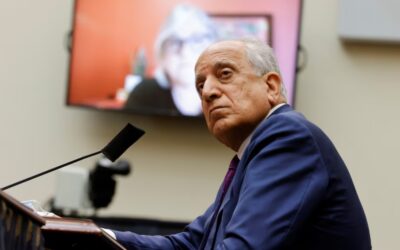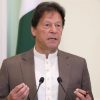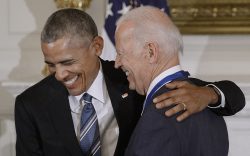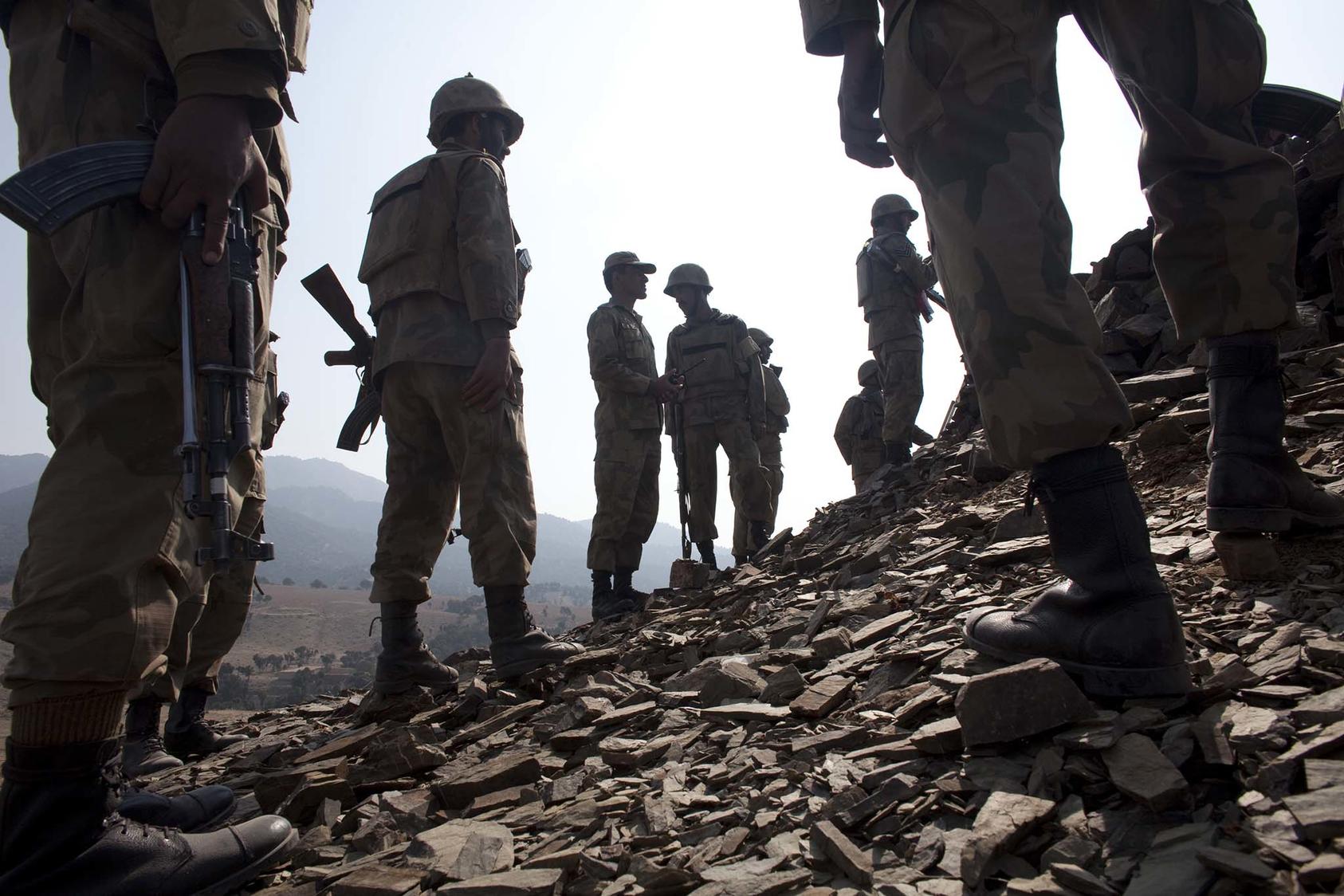
Biden and Washington’s Perennial Pakistan Problem
04 February 2021
Among the many challenges facing the Biden administration will be addressing the infamously dysfunctional U.S.-Pakistan relationship. Anyone familiar with how Islamabad and Washington have interacted over the last 74 years will resort to tired metaphors: a roller-coaster ride, a sine wave, the dynamic between an overbearing mother-in-law and her daughter-in-law. These clichés reflect the reality that the relationship has rarely been stable and usually is either declining precipitously or accelerating unsustainably. The challenge for the new administration will be to find a way to work productively with Pakistan without oscillating between peaks of enthusiasm and depths of cynicism.
Much will depend on the framing of the relationship. The essential reason for the volatility in the U.S.-Pakistan relationship is that it has always been dominated by what diplomats call “external” foreign policy considerations: during the Cold War it was about confronting communism; since 9/11, about countering terrorism and supporting the war in Afghanistan. For Pakistan it has mostly been about its perennial rivalry and occasional confrontation with India. These disconnected strategic visions might have been manageable had there been a strong underlying economic or cultural partnership, but that has not been the case. And both sides have tended to benefit, at least in the short-term, by focusing on the narrow overlap of geopolitical interests.
For the moment, the relationship is still largely framed in terms of Afghanistan, especially as Washington has entered the endgame of its military involvement. Over the medium term, China is likely to define the bilateral relationship. The big question is whether and how Pakistan fits into the United States’ Indo-Pacific strategy. Will Pakistan be seen simply as a spoiler and a potential rival in the new great game with China?
Afghanistan Endgame
While the Biden administration has not fully formulated its Afghanistan policy, it has signaled that it will support the ongoing peace process perhaps with a greater emphasis on preserving the gains of the past two decades. But it is unlikely that the new team will entirely reverse the commitment to withdrawal of U.S. forces that is at the core of the U.S.-Taliban agreement. While the Afghan endgame may be protracted, it is underway, meaning that eventually the relationship will be reframed
Pakistan will still have an important role to play both in obtaining a political settlement, as well as in its implementation. If the Biden administration seeks to delay the May 2021 deadline for final and complete withdrawal of U.S. forces, it will need Pakistan’s help in selling that concept to the Taliban, as the bipartisan Afghanistan Study Group recommends. If the United States insists on reductions in violence and political concessions by the Taliban at the Doha negotiations, also as called for by the Afghanistan Study Group, then Pakistan will also be essential.
If negotiations break down, the United States will be faced with the choice of unilaterally disengaging from Afghanistan or maintaining its military presence in the face of renewed Taliban opposition. In either case, Pakistan will be critical. In the case of withdrawal, the United States will look to assure that its counterterrorism requirements are still met, which will at a minimum require the use of Pakistani airspace. In the case of ongoing war, it will need that same airspace to supply its forces and provide the air support that is vital for regime survival. Either way, Pakistan will have some leverage over the United States as it has since 2001.
However much Washington might wish to quickly disengage from its fraught relationship with Pakistan, it will be difficult to do so until a comprehensive political settlement to the Afghan conflict has been reached and at least partially implemented. But the United States will not pay a high premium for Pakistani cooperation (which is seen as achieving both Pakistani and U.S. objectives), and the post-9/11 multi-billion dollar blandishments are unlikely to return. Washington believes it got little result from those investments and in an era of pandemic there are now higher funding priorities.
Indo-Pacific Strategy
However, the Afghanistan endgame develops, the larger framework for U.S. relations with South Asia will be shaped by the Indo-Pacific strategy. While conceived by the Trump administration, Indo-Pacific strategy is likely to continue in some form, as the appointment of Kurt Campbell as Indo-Pacific coordinator at the National Security Council suggests.
Pakistan is a hugely important country in the emerging geopolitical competition with China in South Asia. Pakistan is one of China’s few allies; it is home to the China-Pakistan Economic Corridor (CPEC), the showpiece of the Belt and Road Initiative (BRI); it is object of massive Chinese investment (at least $40 billion under CPEC); and it is the beneficiary of Chinese protection in the U.N. Security Council. Over the past decades Pakistan has moved from its traditional alignment with Washington, to an increasing international alignment with Beijing, reflecting a fundamental geopolitical fact: both Pakistan and China regard India as a threat, whereas the United States sees India as a partner.
For the Biden administration, the question will be whether it simply accepts as an unpleasant fact that Pakistan has already moved into China’s camp or try to compete with China in Pakistan. While Islamabad’s strong tilt toward Beijing might be seized upon as an easy way for Washington to get out of a dysfunctional relationship, there are costs: Pakistan is a nuclear weapons state with the world’s sixth largest army. That is a lot of combat power to allow simply to fall into a rival’s hands. Moreover, the United States has historically played an important (if quiet) role in de-escalating Indo-Pakistan conflicts. If the United States entirely gives up its leverage in Islamabad in favor of building influence in Delhi, its ability to play that role will be diminished. Since China shows little interest in assuming this responsibility, and in any case will not be perceived by Delhi as an honest broker given that China has its own border conflicts with India, the likelihood of an escalatory cycle getting out of control seems more likely.
In short, Washington will continue to have security interests in Pakistan, both in terms of narrow self-interest (i.e., the Afghanistan endgame) and the broader common good for preventing nuclear war. This argues for maintaining some minimal security relationship—at least professional military training and perhaps modest security assistance for truly joint objectives. There are object lessons here from the lost decade of U.S.-Pakistan relations (1990-2001) in which the United States cut off security assistance because of legitimate concerns about nuclear proliferation, but eventually came to regret complete disengagement and the path that Pakistan took in response, which partially resulted in the 9/11 attacks.
Economic Security
Prime Minister Imran Khan’s government has made economic development a central theme of his administration, shifting the overall paradigm from a state dominated by national security concerns to one focusing on economic security, in the government’s telling. In part this reflects an increasing desire throughout South and Central Asia for greater economic interconnectivity, with Pakistan arguing for North-South connectivity (i.e., China and Central Asia connected with Pakistan) rather than East-West connectivity (which raises the contentious issue of trade across the India-Pakistan border).
While some of this argument is clearly an ex post facto justification for CPEC, there is also a belated recognition that after nearly two decades of countering terrorism, Pakistan needs to focus on creating economic opportunities for its growing middle class and its burgeoning youth bulge. Despite some successes in energy generation and infrastructure, CPEC is unlikely to generate significantly increased employment opportunities—as elsewhere in the BRI, CPEC is more about exporting surplus Chinese capacity (including labor) than generating sustainable Pakistani enterprises. In fact, the economic free zones concept of the original CPEC are quietly being buried.
The growing skepticism about CPEC creates an opportunity for the United States, although massive development assistance is both unlikely and probably imprudent. Private American investment supported by existing government programs such as those of the new Development Finance Corporation (DFC) and the Blue Dot network could help Pakistan to foster an economy more focused on export-led growth. In some ways, the market fundamentals are positive: a growing, youthful population; an English-speaking elite with a western orientation and education; and a talented and entrepreneurial private sector. But at the same time, there are huge challenges to be overcome, including corruption, a legacy of statist interventionism, and a bureaucracy that has become ossified by endless political infighting. Fundamentally, the Pakistani economy needs deep reforms and if Pakistan chooses to go down that path, the United States could be a useful partner.
Another area where the United States has reservoirs of strength is in soft power. Despite the problematic political relationship of the past three decades, elite and aspiring elite Pakistanis still slouch toward America. American higher education is still aspired to, and even the U.S. government’s social media reach is unaffected by political downturns. Washington has invested significantly in its public diplomacy programs in Pakistan, and those educational and cultural exchanges provide a basis for a relationship that is less centered on security matters.
Getting Rid of Tired Narratives
If Pakistan and the United States are to build a new relationship it will be necessary to get rid of the some of the public narratives that constrain the relationship.
On the Pakistani side, it would be useful to drop the idea that Washington is purely “transactional” rather than “strategic” in its approach to Islamabad. The reality is that all international relations involve a degree of transactionalism, and that complete strategic alignment is quite rare; it is certainly not possible between the United States and Pakistan given their fundamentally divergent views of India and China. But there may be enough overlap of national interests that allows each side to build a productive relationship that is neither purely transactional nor exclusively strategic.
For Washington, it would be useful to recognize that what has often been labeled Pakistani duplicity has been the outcome of attempting to cooperate in the absence of strategic alignment, particularly regarding Afghanistan, where the two countries have been at cross purposes for much of the past two decades. And from a Pakistani perspective, some American actions, such as applauding Pakistani democracy while conducting unilateral counterterrorism operations on Pakistani soil seem also to smell of hypocrisy.
The days of a tight U.S.-Pakistan relationship, in which the military and intelligence aspects of cooperation dominated, are probably gone for good. It is hard to imagine an Islamabad increasingly aligned with Beijing and still being close to Washington. But a productive relationship may be possible if it is “rightsized” and focused on genuinely overlapping interests, especially economic and cultural ones.
there is not post in layout 2
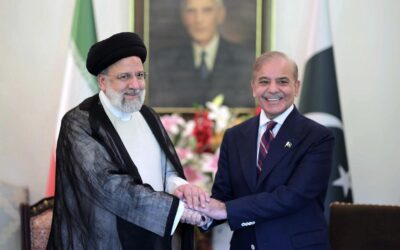
Pakistani and Iranian Leaders Commit to Strengthen Cooperation in Combating Militancy Originating from Afghanistan
Pakistan and Iran, neighboring nations with a lengthy and permeable...





